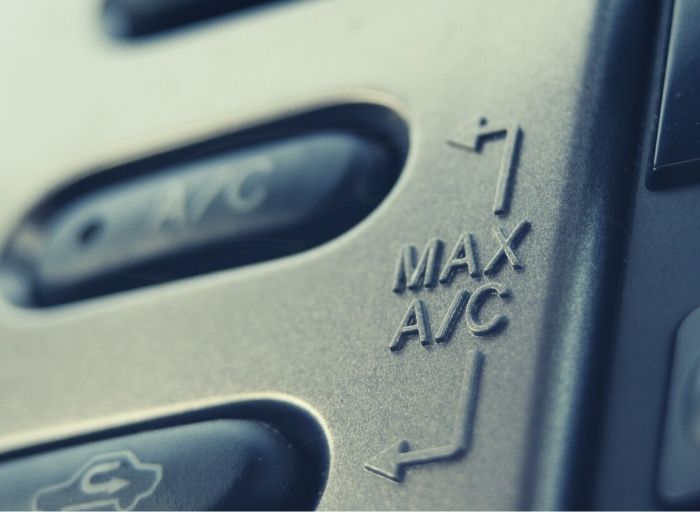
Max AC vs AC? You’re not alone if you’ve ever wondered what the difference between Max A/C and A/C is. Since the introduction of Max A/C, these two buttons have sparked debate, and the internet is littered with forums where people speculate on their exact use. So, what’s the difference between standard and maximum air conditioning?
In short, standard A/C turns on your car’s air conditioning system, which sends incoming air via a compressor and condenser to cool and dehumidify it before being pumped into your vehicle. The A/C and re-circulation modes are activated when Max A/C is selected.
Table of Contents
Basic A/C Principle
There are two primary forms of air conditioning:
- Fresh air from the outside
- Recirculate
When the car is in outside air mode, air from outside the cabin is allowed to enter. The term “recirculate” refers to the vehicle’s utilization of air within the cabin.
It’s worth noting that air can come from both sources in both modes. You will recirculate in outside air and get outside air in recirculating. The amount is what you change.
Turning on the air conditioner and letting outside air in is common to cool a hot cabin. This is done to bring in fresh outside air to replace the hot interior air. After the heated air has been replaced, the recirculation mode is activated to speed up the cooling process inside the cabin. It’s easier to cool recirculated air inside the cabin than cool outside air.
Max AC vs AC: What’s the Difference?
Max A/C
Using the A/C function of a car causes air to be processed through the air conditioning system, as previously discussed in the preceding section. This is a requirement if you want to cool down your vehicle rapidly. The amount of air being pushed out and whether you’re in re-circulation or fresh air mode are two more elements that affect how quickly your car cools down.
When you utilize the Max A/C option, it simply turns on your car’s air conditioning, switches to recirculation mode, and forces all air through the dash vents to assist chill your vehicle as quickly as possible. That is all there is to it.
If you use Max A/C and then manually turn off the recirculation mode, Max A/C will shut down because it only works in re-circulation mode. This is because Max A/C’s main aim is to chill your vehicle as soon as possible, and re-circulation mode aids in this process.
Standard A/C
A few things happen when you hit the A/C button in your car. First and foremost, it turns on your vehicle’s air conditioning system. If your automobile is programmed to blow cool air, but the A/C switch is not turned on, it will only blast cold air. This is because the entering air is not treated by the A/C system.
When you click the A/C button, any incoming air is sent through the system’s compressor, which cools and dehumidifies it before being pumped into your vehicle. This works with either the recirculation or fresh air modes. The main difference is that in recirculation mode, the air in your automobile is reprocessed, but in fresh air mode, new fresh air is constantly drawn in from outside your vehicle. Both techniques will chill your vehicle, but recirculation mode is faster because it is easier to lower the temperature of already cooled air.
Also, as window fog is generated by a difference in humidity between the interior and outside of the car, using heat in combination with the A/C function speeds up clearing your windows.
Moreover, if you want to use the A/C with heat to clear your windows, switch from recirculation to fresh air mode. Because variances in humidity generate window fog, it’s preferable to bring in air from outside the car to fill the gap between the two moisture levels. Using the recirculation mode will keep cycling the same damp air through your vehicle, making it take longer to clear your windows.
Conclusion
Both standard A/C and Max A/C will cool your vehicle. The only difference is how quick they are. I don’t think there’s much difference in the length of time it takes depending on whatever approach you choose. I suppose it all relies on how effectively the A/C system in your particular vehicle was developed. The air conditioning systems in specific makes and models are superior to those in others; thus, outcomes may vary.
Hi there! I’m Naomi O’Colman. I’ve got years of experience working at an auto repair shop here in Texas under my belt. On top of that, ever since I was a kid I’ve been passionate about the auto industry. Since I’ve joined the team at automotivegearz.com I’ve been enthusiastically sharing my passion and insights with my readers. I’m dedicated to delivering high quality content and helping you stay up to date with the latest automotive trends and products out there!







